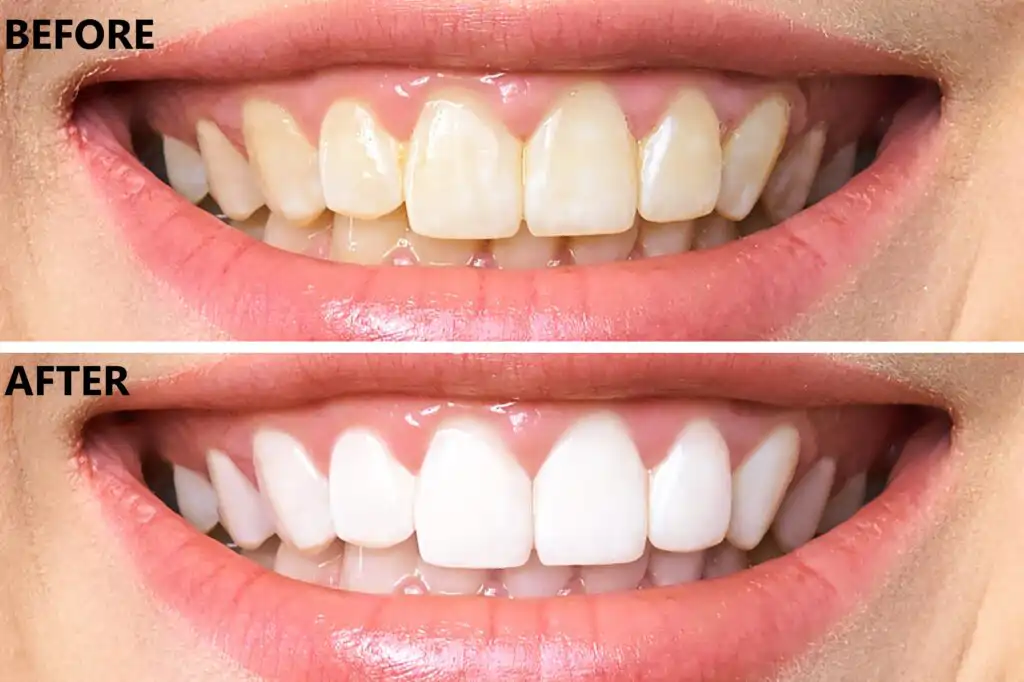Teeth Whitening

Teeth Whitening
Teeth Whitening – A Dentist’s Perspective
As a dental professional, I often meet patients who feel self-conscious about the color of their teeth. Over time, natural teeth can become stained or discolored due to lifestyle habits or internal factors. Teeth whitening is a safe, non-invasive, and highly effective cosmetic procedure designed to restore brightness to your smile.
What's Included
What Causes Tooth Discoloration?
- Extrinsic Stains: Surface-level stains from coffee, tea, red wine, tobacco, and certain foods.
- Intrinsic Stains: Deeper discoloration caused by aging, trauma, fluoride, or medications (like tetracycline).
What Is Teeth Whitening?
-
Teeth whitening involves applying a bleaching agent—typically hydrogen peroxide or carbamide peroxide—to the enamel to lighten its color. It helps remove surface stains and can even reach some deeper stains, depending on the product and method used.
Types of Professional Whitening
- Performed under dental supervision, using high-strength bleaching agents and often activated with light or laser. Delivers immediate results in 30–60 minutes.
- Custom-fitted trays with professional-strength gel. Used at home for 10–14 days. Ideal for gradual and natural-looking results.
- Includes whitening strips, gels, and toothpaste. Results may vary and are generally less effective than professional options.
In-Office Whitening
Take-Home Whitening Kits
Over-the-Counter Products
Benefits of Professional Whitening
- Brightens and enhances your smile
- Boosts confidence and appearance
- Quick, effective, and safe under professional care
- Non-invasive and painless
- Temporary tooth sensitivity
- Mild gum irritation
Possible Side Effects
Note: Whitening does not affect crowns, veneers, or fillings.
Aftercare Tips
- Avoid staining beverages for 48 hours (e.g., coffee, tea, red wine)
- Use a straw when drinking colored liquids
- Brush with sensitivity toothpaste if needed
- Maintain regular brushing and oral hygiene
Conclusion:
-
Professional teeth whitening is a safe and effective cosmetic treatment. Always consult your dentist to ensure you're a suitable candidate and to select the best option for your smile goals.
Medicine Use Disclaimer: Do not self-prescribe or start any medication or topical treatment without consulting a qualified doctor. Improper use can lead to side effects, resistance, or complications. Always follow professional medical advice.
